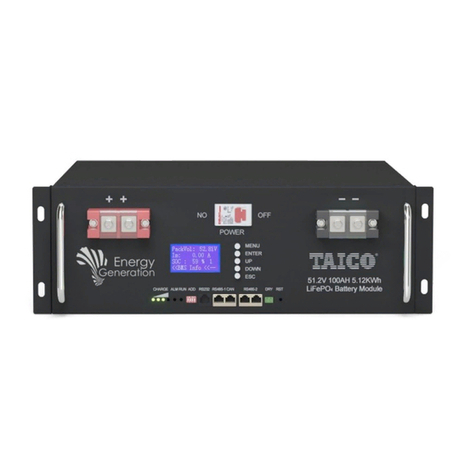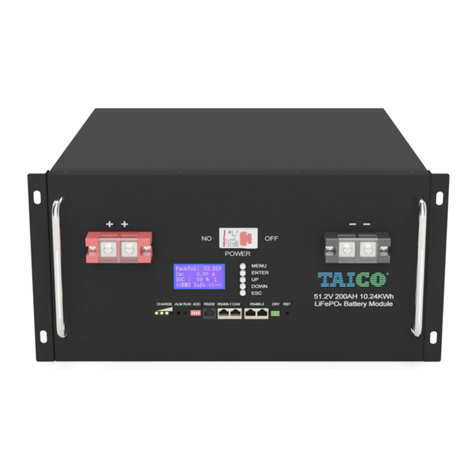
1.1.3 Wiring must be correct, do not mistake positive(+) and negative(-)
cables, and ensure the external devices are not short-circuited;
1.1.4 Direct connection of batteries and AC power is prohibited;
1.1.5 Battery protection system is designed for 48V DC, no series
connections allowed;
1.1.6 Please ensure that the electrical parameters of the battery system
are compatible with the relevant equipment;
1.1.7 Keep the battery away from water and fire.
1.2 Usage
1.2.1 If the battery system needs to be moved or repaired, the power must
be cut off and the battery completely stops working;
1.2.2 It’s prohibited for connecting this battery to other different type of
batteries;
1.2.3 It’s prohibit for connecting this battery with any faulty or incompatible
devices;
1.2.4 When fire occurs, only dry powder fire extinguishers can be used,
liquid fire extinguishers are prohibited;
1.2.5 Do not disassemble batteries privately;
2. Introduction
This battery is a new type of energy storage product, which can be used to
provide reliable power supply for various equipment and systems. It is
especially suitable for applications with large power, limited installation space,
limited bearing capacity and long life. Battery built-in BMS -battery
management system, battery voltage, current, temperature and other
information management and monitoring. In addition, the battery pack can
balance the charge and discharge of the battery to prolong the cycle life.
Multiple battery packs can be parallel to expand capacity and power, parallel to
expand capacity and longer power support time requirements.





























